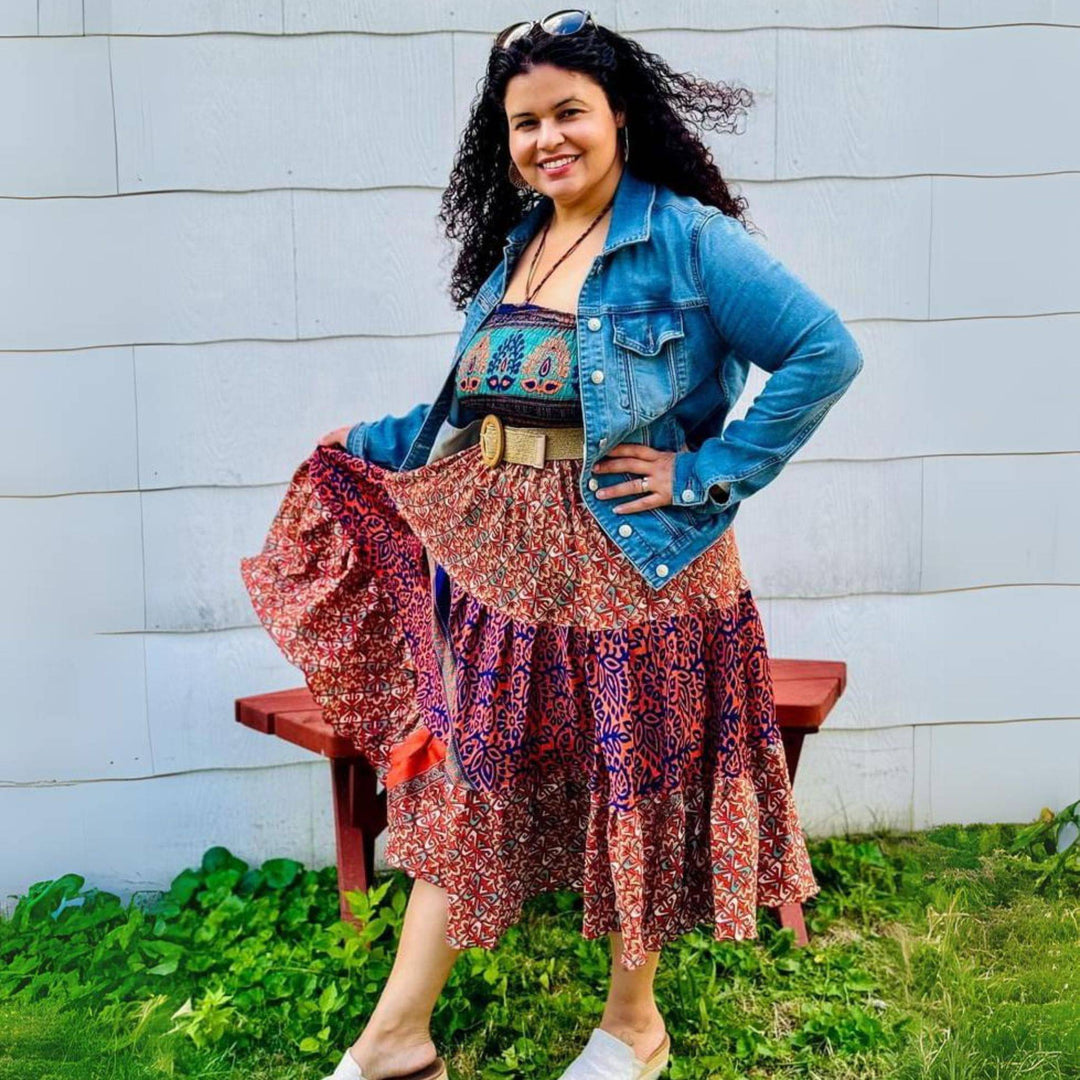Written by Kate Curry
An important part of everyone's life is education. The majority of us are either still in school or have managed to finish our education - and we are lucky to have that privilege!
With an education structure that is very similar to the US, and with the government declaring it compulsory for all children to go to school, you'd think that the level of education and literacy in India would be at a similar rate as the US.
As it turns out, people in the US are much more privileged when it comes to education as the children of our artisans in India.
What Is School Like For Children In India?

Like the US, India's school system has 4 different levels: lower primary (6-10), upper primary (11-12), high (13-15), and upper high schools (17-18). These schools are split into two groups: public government schools (similar to public schools in the USA) and international schools (India's version of private schools). In 2009, the Indian government enacted The Right to Education Act, which acknowledged education as a fundamental right to all children up until the age of 14. Children are expected and are legally obligated to get a basic level of education.
Unfortunately, this act was unable to give equal education to children.
Divisions In Education
As we've talked about in previous blogs, the citizen's in India are often segregated based on religion, race, gender, and caste. These inequalities and stigmas about marginalized groups have bled into the education system.
According to a 2018 study, India has a literacy rate of 74.4%. Out of those that are literate, over 80% of those are Hindu men of the upper castes. Men of higher castes are elevated to an affluent status in India's culture and society; making education and other privileges easier to access.

Caste-Suppressed Education
According to India's Constitution, treating others poorly based on caste-placement is illegal, but it is hard to create and enforce meaningful systemic change. Law makers, teachers, and other educators find ways to make it difficult for lower-caste children to pursue their education.
We have heard stories from our artisans about unjust treatment due to their caste. Some children, who go to government-public schools, are made to walk for miles out of their rural villages to access their underfunded schools. Children that co-exist with the other castes in their schools are often bullied by other students and their educators.

Some children are forced to sit outside of the classroom and are not allowed to sit at the same desks or use the same pencils as the higher-caste children.
This dehumanization and bullying cause many children to drop out of school. Imagine the daily torment that these children have to endure, when all they want is the same chance at an education as anyone else in their school.
Language is another cause of student dropout. There are many different tribes and cultures in India, and many have their own local dialects. If the teachers in the area do not learn these dialects, the students are often ignored which leads to them leaving school.
Gender-Suppressed Education
Globally speaking, more men are able to read and write than women, and this disparity is also reflected in the literacy rate in India. Both scarcity of schools in rural areas and poverty contribute to the disparity. Especially in rural areas, women and girls are often not given proper access to formal education, and even if they are, many drop out.

Even though the Indian government claims they have a firm commitment towards the education of all their children, India has one of the lowest literacy rates for females in the entirety of Asia. Almost 40% of young girls do not go to school. Instead, they are working or finding a husband to support them. Even though India has outlawed child labor, you can easily find young children working to help support their families if you look, especially in the fast fashion and textile industry.
Our Artisans & Their Education
The average level of education of the artisans we work with is a 7th grade education. The main reason for this is that their parents had that same level of education, there wasn’t enough money to continue their education, they lived in a rural area with no schools, or they were from a cultural minority and were bullied out of school.
When it comes to how they feel about education, artisans understand the value and importance of education. They don’t want their children to go through what they have. These amazing parents have worked themselves to the bone and have gone hungry to make sure their children could get an education.
Indian children today are better protected than their parents. Strict child labor laws make it very difficult for any children under 16 to be hired for any job. This causes less children to be sent off to work, so they can go to school!
What Can Education Do For The Children Of Our Artisans?
Education is truly the gateway to a better life. Many of our artisans work solely for the purpose of their children getting an education. With proper education, the children of our artisans can uplift themselves and break the cycle of generational poverty that the government wants to keep them subjected to.
Remember - our artisans are seen as the ‘other’ of Indian society. The government wants to keep them poor to maintain an easily exploited labor force.

The Indian government has attempted to make steps to make education more accessible to all Indians. A variety of programs have been instituted to help with the costs of education, such as helping families pay for lunches, uniforms, and school supplies.
There are massive lobbies for private schools, which prevent public schools (or as they’re called in India - government schools) from getting the funding that they so desperately need. The public schools in the large cities are well funded, but the private schools prevent the more rural public schools from getting equal funding, as they are given funds meant for the rural schools.
It’s not only funding that is lacking! In many rural areas, the monthly paycheck for a teacher is only $100 USD! Inayath, one of our co-op leaders in India, has a brother who became the head of the local government school committee to try and improve the situation for the community.
In their community, there are 600 students enrolled in school, but there is no building available. The community is advocating for teachers, but the government will not budge on their $100 a month salary. This makes it difficult for a long-term teacher to want to work for a non-livable wage.
In April of 2010, the country created a right to education act. This act ensured that the government would pay tuition for a private education- no matter their social class or group. In 2018, these rules were changed. The government would only support tuition in areas where there were no public/government schools. Many of these rural schools cannot afford to pay teachers or have the means to support the students, which causes students to drop out.
Our artisans have tried to help their communities by convincing students to return to school. Schools are now offering free food to students to try and get them back in the classroom. Rural schools have looked to be funded by outside sources, such as one school in Bangalore that is funded by the Bangalore International Airport!
With new laws and acts in place, students are still struggling to get the education they deserve. The current challenge is the quality of education in public schools. They only recently got a pre-nursery in the local school, and the community had to fight to build the building and pool their funds together to hire a teacher. Without early education, many parents, mostly women, would not be able to work to earn a living.

Due to COVID, most private schools had online classes and had tentative touch with their school and teachers. In rural public schools, these students have lost 18 months of schooling because their school did not have the infrastructure, training, or devices to do online schooling! Schools are just starting to get back to normal and teachers are trying to catch their students up. This has contributed to a major academic gap among government school students
How You Can Help!
Did you know that the Darn Good Fund helps the education of our artisans and our children? With this fund, we purchase supplies, clothes, and sponsorships for the children of our artisans so they can spread their wings!
By purchasing any of the products in our Do Darn Good Collection, a portion of the proceeds will go directly to the Darn Good Fund and help change the lives of children around the world!

 Rewards
Rewards





















